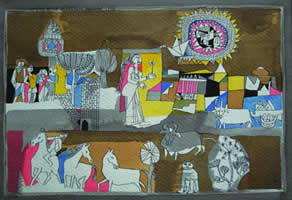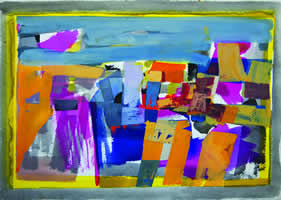Politically Correct?
Politically Correct?
The Sudhir Mishra Retrospective at the IndiaHabitat Centre
The Inaugural film “Hazaaron Khwaishen Aisi”
a review by Divya Raina
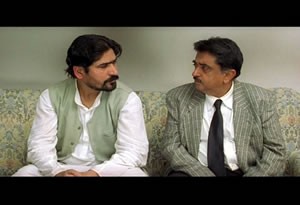
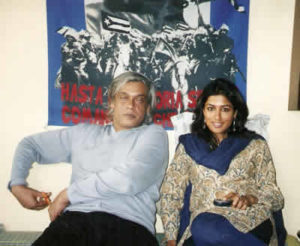
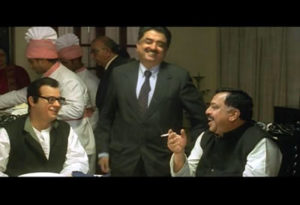
1.Actors Yashpal and Manohar Khushalani 2. Mishra with Chitrangada 3. A scene depicting Rajiv Gandhi
One was heartened to see a fairly sizable audience for the India Habitat Centre’s Film Festival screening of Sudhir Mishra’s “Hazaar Khwaishen Aisi” (HKA).Apart from the regular viewers there were many film buffs of a more vintage period whom one remembers frequenting the Panorama sections of the India International film festivals of yore (before IFFI moved to Goa, of course).The director’s presence at the venue was a bonus and though he spoke briefly, even his persona prepared one for what was to follow. One was immediately transported back in time when youthful passions, at least in some sections of the university in major metros, particularlyDelhi, were not into pragmatic issues and concerns but more about ideas of changing the world.
This film attempts a relook at a pretty turbulent period of India’s recent history, depicted through following the trajectory of three friends and their intertwining lives. The personal is political in this film: you have the ardent radical, the man-on –the-make, the woman they both claim to love and who herself is repeatedly torn between the two worlds. She marries neither of her friends but the secure, conventional IAS Officer (a little too fond of his drink) and is shown flouting convention but unhappily moving from one ideology and geographical area to another in the course of the film.
All this makes for a pretty gripping tale and the film does pack in quite a few punches. It also makes some telling points about an entire generation-its restless yearning to find a cause, to make sense of the left- liberal ideas they were exposed to and a desire to do something to both alleviate its guilt and at the same time rid the rural deprived of their exploitative predicament. There is space here to form one’s own value judgment and judge with the advantage of hindsight as to whether the youth shown were misguided or actually very heroic.
The film in fact paints a rather wide canvas, both in the sweep of time (the sixties, seventies and particularly the time of the infamous Emergency) and the many significant points it wants to cover, as tellingly and economically as it can. The result is bold brush strokes, tropes and visual metaphors, poster like scenes, theatrical settings, and vivid well cast characters representing different professions, castes and classes, you can find them all here.
Politicians, particularly of the Youth congress type, with a caricature of Sanjay Gandhi thrown in, all come in for a satirical sweep in the screenplay which is a joint collaborative effort of Sudhir Mishra, Shiv Subramaniam and Ruchi Narain. The police too are depicted repeatedly as coarse, inefficient, brutal, uneducated and buffoon -like in their exercise of power, making mistakes that have disastrous consequences and repercussions.
The various twists and turns in the lives of Siddharth Tayebji(KayKay Menon), Vikram Malhotra(Shiney Ahuja) and Geeta Rao(Chitrangada Singh) with their letters to each other in the form of voice-overs serve as a cinematic device to cue us in. The swift cuts are due to the editing of Catherine D’Hoir and the effective cinematography is by Jacques Bouquin and Aseem Bajaj. We are shown the almost idyllic green fields of Bhojpur, Bihar and the various interiors in the urban landscape separated, as we are informed in the voice-over “by 1000 miles and 5000 years”. The contrasts are well established and the “alienation” effect of both Brechtian theatre and a Godardian cinematic are at work here. This is clearly a film that makes you think, it is not going to lull you into a soporific state that is typical of mainstream Bollywood films.
The scene with the Raja and his insane son is particularly effective; representingIndia’s decaying aristocracy and their selling of palaces and their estates and all that this entails, in a vivid episode that is as dramatic as it is telling. Manohar Khushalani has a brief appearance here and is as convincing as always.
This is a significant film that makes many snapshot assessments of a lost generation, with its restlessness being mirrored in the cinematic style and deserves many screenings, particularly for the university youth of today (but obviously not restricted to them alone): they may then get to know why their parents used to be so fired up, till they too got co-opted eventually.
